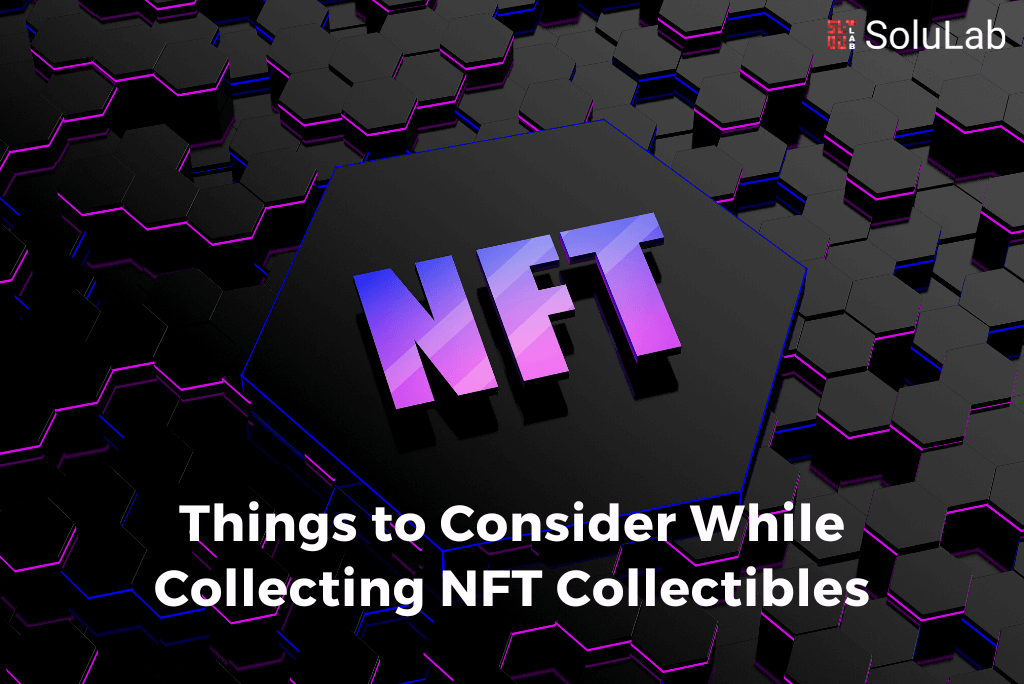
A 10-second piece of video art was purchased by Pablo Rodriguez-Fraile on October 2020 for $66,666.66. He resold it now for $6.6 million in February 2021. The artist who made the video may not have been well-known to you a while ago, but chances are you have since. A $69 million NFT was sold by Mike Winkelmann, also known as Beeple, through Christie’s in March, setting up a major craze around digital art and cryptocurrencies.
While some collectors purchase NFTs just for their own enjoyment, many do so with the expectation that their value would rise over time. Much like you might anticipate with fine art prints, its value frequently hinges here on cultural zeitgeist, the reputation of the artist, or perhaps the rarity of the work. An NFT’s value fluctuates over time based on what consumers are ready to pay for it. Art collecting is always fraught with risk, but it may also be lucrative. Here are a few suggestions to keep in mind when collecting nft collectibles.
1: Collect what you love
NFTs are still somewhat speculative, therefore it’s better to begin by investing in photographers and artists you adore and will always appreciate. In the field of traditional painting, there is a proverb that goes, “Buy with your eyes, not with your ears.” That is, steer clear of “the flavor of the week” (or those gargantuan headlines) and invest your hard-earned cash in a musician or artist you enjoy and a piece of art that makes you happy. Purchase an NFT initially out of a desire to claim it, not just because you believe it will increase your wealth. While it is possible to foresee how an asset will act over time, there is never a guarantee that its value will remain stable.
2: Research
With that being said, anyone can mint an NFT, so it can take time to find the right photographer to support or invest in. Learn as much as you can about the artist’s story and career thus far. If you believe in an artist, you can invest in more than one asset of theirs, potentially becoming an authority on their work. An important detail to look for is whether the artist or project has an existing community and following, which can provide valuable information—especially if you plan to flip the artwork.
Read also: Top 8 NFT Collections You Should Know About
Considering that anyone can create an NFT, it may take some time to identify the best photographer to back or invest in. Find out as much as you want about the artist’s life and professional history. If you have an interest in such an artist, so put money into more than one of their creations, possibly establishing yourself as an expert on it. If you intend to sell the artwork, it’s especially crucial to consider whether the artist/project already has a community and following because this can give you useful information.
3: Start small (and consider options)
We advise starting with (much) smaller and less expensive artwork. Fractionalization may be an alternative for you if you like an artist but are unable to purchase a piece from them. The idea is straightforward: numerous collectors buy a piece of artwork for a lower price than one buyer would pay to buy the entire piece. Similar to purchasing stock in a firm, the group shares and divides ownership of the piece of art. While rising collectors frequently band together and make purchases as a group, this is a novel application of this concept in the realm of art.
4: Consider the provenance
An NFT’s worth will probably be influenced by its ownership history, just like with any other work of art. NFTs still have unidentified items, however, in the old art world, an item may be valued higher if it was a part of a collection that had historical significance. Some of these already exist in the NFT market, led by well-known collectors. NFTs from these well-known collections are probably beyond your price range, but by researching collectors you adore who have collections that meet your budget, you can find undiscovered treasures.
5: Look for added value
With their NFTs, many artists & marketplaces will offer “unlockable material,” which can raise the value for the collector. Physical artworks like fine art prints or digital content like behind-the-scenes movies or high-resolution files can both be considered “extra” content. Artists may even provide NFT customers with tangible benefits, such as invites to exhibitions, studio visits, or anything else entirely. When making an NFT investment, bear in mind the following: What more will you receive when you purchase in addition to the token itself?
6: Mind the details
In the traditional world of art, the object might be physically examined by a qualified assessor to determine its quality and, consequently, its value. Naturally, with an NFT, it would not be possible, but there are several factors you can consider to assess the asset’s quality. Many of these specifications are comparable to what you’d look for in a file that you intended to print out or display: you want a high-resolution file, and you want one with a high-quality file format.
Bonus
One mistake new collectors make, in the traditional and digital art space, is investing in tons of assets without anywhere to showcase them. But as crypto art has exploded in popularity, collectors have looked for new and innovative ways to display their collections, both in the real world and in the virtual space, so that’s something to consider before investing.
Keep in mind that unless the photographer has explicitly signed away the copyright to a work (and this is rare), it remains with them. It’s important to read and understand any contractual obligations or licensing restrictions associated with your NFTs, so go through the contract carefully to see how and where you’re allowed to display or present the work. Often, it’ll be for personal, non-commercial use.
Conclusion
The points discussed here are shouldn’t be viewed as hard-and-fast rules but rather as helpful pointers. The potential future value of NFT collectibles cannot be predicted statistically. Users who are considering buying any NFTs for themself should first conduct extensive study and analysis. The value of NFT collectibles is established by market forces.
Read also: How NFTs Enable the Market for Digital Collectibles
NFT collectibles can and do draw speculators trying to make a profit, but users should carefully balance internal considerations like whether they esteem the NFT on a personal level with extrinsic factors like an NFT’s utility or rarity. NFTs have different values depending on who is looking at them. Even NFTs with little secondary market value can be regarded as priceless by the proper owner.




